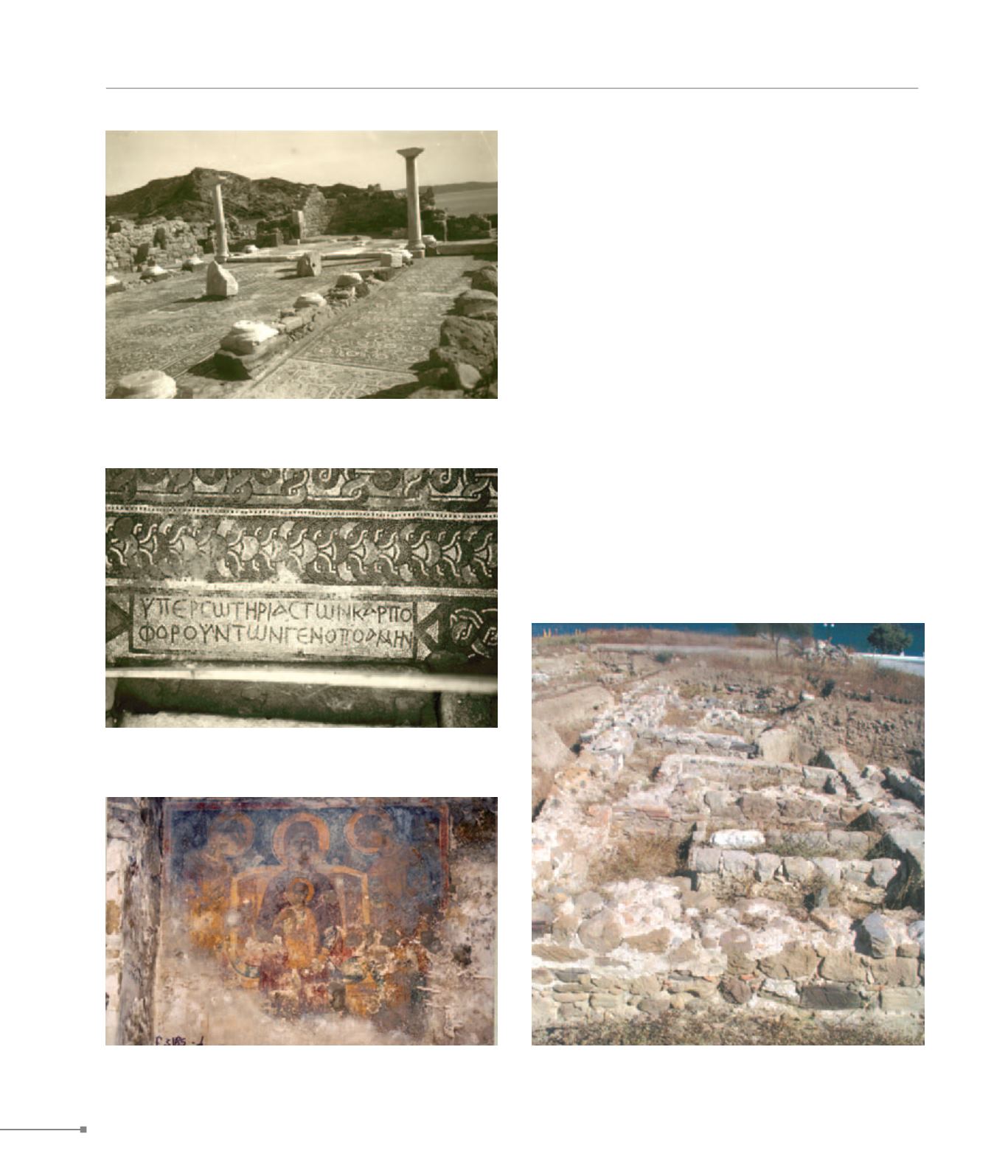
Kos.
Kos.
THE ISLANDS
398
604.
Kos.
As indicated by the surviving monuments on Kos, it enjoyed
great prosperity in the Early Christian years, mainly due to its
geographical location – a station of paramount importance on
the commercial seaways connecting Alexandria with Constan-
tinople. Christianity was spread early in Kos, as inferred by
the participation of Meliphron, bishop of Kos, at the First Ecu-
menical Council of Nicaea in 325. Early Christian settlements
developed at the lee bays of Kephalos (9) and Kardamaina
(8), as well as on the N coast (Mastichari) (6), while the island
capital was located at the site of ancient and present-day Kos
town (1). Both in Kos town and in the countryside, a large
number of Early Christian basilicas has been excavated or just
detected: Basilicas Α and Β at W Thermai, basilica at the Port,
basilica of Saint John Prodromos (Epta Vimata), basilica at
Skandari, basilica of Archangel Gabriel, basilica of Saint Paul,
basilica at Kapamas, basilica of Saint John Theologos, ba-
silica of Aghioi Anargyroi, basilica of Aghia Theotita, basilica
of Aghia Varvara, basilica of Presbyter Photeinos, basilica
at Arangi, basilica of Aghios Stephanos, basilica at Kamari,
small basilica, and more. All basilicas on Kos feature elaborate
mosaics produced by an important workshop that decorated
most of the basilicas and urban buildings of the last quarter
604. Kos, Kardamaina, Early Christian settlement (Κως, Καρδάμαινα,
παλαιοχριστιανικός οικισμός)
604. Kos, Kephalos, Aghios Stephanos basilica, mosaic (Kως, Κέφαλος,
βασιλική Αγίου Στεφάνου, ψηφιδωτό)
604. Kos, Kephalos, Aghios Stephanos basilica (Kως, Κέφαλος,
βασιλική Αγίου Στεφάνου)
604. Kos, Pyli, Panagia Kastianon, wall painting (Κως, Πυλί, Παναγία των
Καστριανών, τοιχογραφία)


